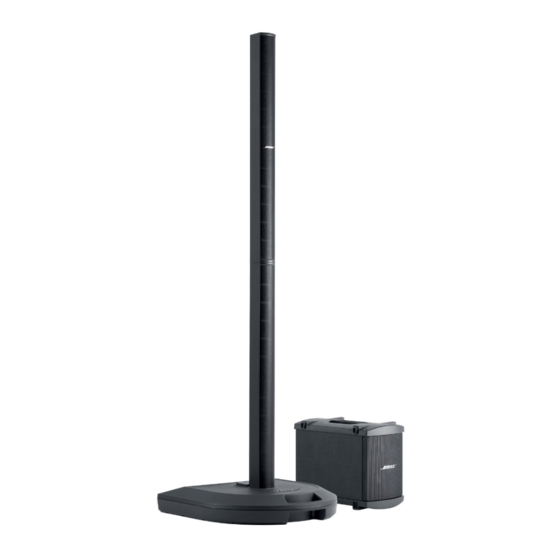Bose Personalized Amplification System Panduan Pemecahan Masalah - Halaman 22
Jelajahi secara online atau unduh pdf Panduan Pemecahan Masalah untuk Penguat Bose Personalized Amplification System. Bose Personalized Amplification System 50 halaman.
Juga untuk Bose Personalized Amplification System: Panduan Pemilik (28 halaman)

1.7 Digital Signal Processor
1.7.1 Architecture
The DSP is an Analog Devices ADSP21065L processor. It boots from an EEPROM
SST20LE020, U462 [DSP PCB sheet 3, C7]. U462 accessed through boot memory space and
through external memory space 3. Either BMS or MS3 on the DSP will chip enable U462 and
then a standard write/read enable interface is used to address U462. The DSP is reset by the
microcontroller through RESET. Chip clock is locally provided through XTAL461 [A2] at 30 MHz
resulting in a 60 MHz internal clock speed.
1.7.2 Interface to Microcontroller
Besides the audio peripherals described in the previous section, the DSP only interface to the
microcontroller. The DSP receives data on FLAG4 (P10 on the micro), transmits data on FLAG5
(P11 on the micro) and FLAG11/P12 provide clocking. RESET/P13 provides the reset for the
DSP and the watchdog functionality. The interface signals are routed through CN341 [micropro-
cessor PCB sheet 2, C8] between DSP and microcontroller board.
1.7.3 Internal LED
The DSP displays a "heartbeat" signal to an internal LED on the DSP board though FLAG10.
1.8 Microcontroller
1.8.1 Overview
The microcontroller is clocked by X341 [D3] (12 MHz) and provides interfaces between nearly all
peripherals.
Pins
P24-P27
Preset switch CH 1, single digit
P20-P23
Preset switch CH 2, tens digit
P4-P7
Preset switch CH 1, single digit
P0-P3
Preset switch CH 1, tens digit
P10-P13
DSP Interface
P14-P15
Remote
P37/ADC7 B1 detection from AMP3 Out
P34
Power Amp Protection/Trouble
P33
Power Supply Protection
P30-P32
Interface to volume control chip
P44-P45
Power LED (red/green)
P43
Bass Sent detection from "Bass Line Out" static
1.8.2 Interface to Remote
Relay of DSP information to the Remote. The DSP in the power stand needs to transfer the clip
state, channel volume data (cause the table for channel volume in the DSP), system working
status to MCU. The communication adopts software simulation UART, with two I/O pins as RX
and TX. Communication rate is 4800bps, add start bit and stop, so every sending byte has 10
bits. Data is send according to frame format: frame head | every data | check sum. DSP will
transfer a frame every 100ms, and every sending will take about 15ms.
THEORY OF OPERATION
Interface
Table 6. Peripheral pins on the microcontroller
Type
static
static
static
static
SPI
Modified MIDI
Analog
Static
Static
2
I
static
22
C
